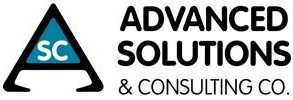Business Models are being disrupted at an alarming pace. As a business you have a choice; embrace change or ignore it. Look at Uber (Taxi), Airbnb (Vacation accommodation), and Amazon (Online shopping with home delivery). There is a lot more coming. Now let’s say you decide to change; that leads to adjusting existing way of doing business. Deciding what to do with your current Accounting/Business Software i.e. ERP lands on your desk. Before we get into the ERP let’s visit the reason for change in business model.
Why the shift?
Iqbal Rashid a business consultant at Advanced Solutions & Consulting observes how companies, which were once known for stellar products (like IBM), are embracing the new realities of “the digital industrial company.” IBM’s previous emphasis was on sales of “hardware”; but they chose to make a massive restructuring. IBM Global Services is now the dominant business unit with products selected to deliver a solution. Furthermore Iqbal states “most certainly, IBM is far from the only company making this transition. One such example is SHOEBACCA a much smaller business selling shoes online; very good example of next generation retailers.
A direct quote from Ryan Schlachter, President of Shoebacca: “Cloud Based ERP solution provider Acumatica has really allowed us to focus on our business—which is selling shoes—instead of focusing on IT and development”
How does this impact your ERP selection?
Listen to what Forrester Research (company known for analyzing IT trends) has found no business that can find a single ERP solution that meets all the requirements. IT executives historically had felt very uncomfortable when faced with the decision to implement new ERP. It’s this rapidly evolving business reality that has companies ranging from startups to behemoths like IBM are discovering that legacy ERP solutions do not cut it anymore. There are whole new generation of ERP players that are offering solutions are not making these mistakes of the past. ERP functionality now often can be selected and deployed incrementally.
What can go right or wrong with your ERP implementation?
Historically the idea that you could find one ERP to meet all the needs of the business at that point in time was at best misguided and problematic. Businesses desire automation encompassing the complete value chain. From selling to delivering to collecting with data flowing seamlessly across the enterprise is the Holy Grail. That has not happened. Countless software deployments have gone awry.
More and more these organizations are bypassing intractable ERP systems for easier cloud applications. Every business is unique and generally has multiple software applications. This situation occurs as new software becomes available combined with changing business environment. Next generation ERP Systems have taken notice and are offering solutions that are implemented incrementally. The platform architecture selected allows for new functions to be added or changes made to existing ones. This situation results in least amount of disruption to operations.
Yes there is a best of breed ERP for you?
As stated earlier the winning choice is place your customer needs first. This results in selecting Customer-centric ERP replacing product-centric model. All the customer information is held together in one database, not in one module or another module. It’s an information-centric view and not module-centric view.
“The result, is when done right, single source of truth information flows in real-time, seamlessly through different functional departments “software modules”. This avoids pushing data through isolated processes which require complex integrations and accessed through clunky and antiquated interfaces.
For example, Acumatica’s cloud-based ERP has built in flexibility, with easy to deploy and easy to use. Jim Carroll of Advanced Solutions & Consulting said: “Acumatica has functional applications that you can turn on and off”.


